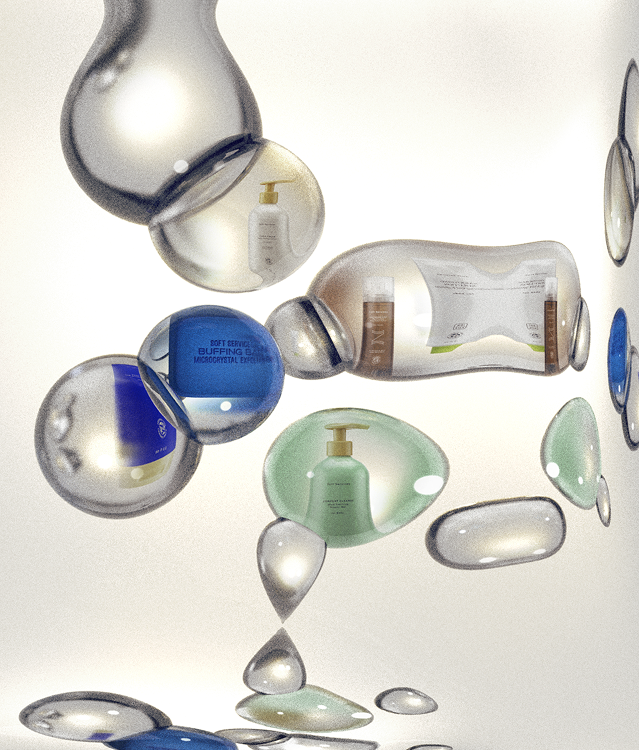Every living thing has a prime set of conditions that allow it to survive. Plants need chlorophyl for photosynthesis to occur. Sloths need 15 hours of sleep and absolutely no stress to conserve energy. Humans? We’re a bit more high-maintenance—water, food, oxygen, wifi, and for many, a double espresso per day. Even our skin, the body’s largest organ (though often treated as just a shell), has its own set of non-negotiables—chief among them: a balanced pH.
pH stands for “potential of hydrogen,” effectively the concentration of hydrogen ions in a given sample. It’s measured on a scale from 0 to 14: below 7 is acidic, 7 is neutral (like water), and above 7 is alkaline. Acidic substances (such as vinegar, lemon juice, and battery acid) have a high concentration of hydrogen ions whereas alkaline substances (such as stomach tablets or household cleaning products) have a low concentration of hydrogen ions. TLDR: the more acidic a substance, the more hydrogen ions it contains.
|
|
|
At the right pH, the skin’s acid mantle (aka the skin barrier) can do its job—protecting against bacteria, viruses, and other irritants. When that balance is disrupted, things can go south: dryness, irritation, itchiness, breakouts, and increased sensitivity. Just like you need a good cup of coffee to be a functioning member of society, your skin needs an ideal pH to keep everything running smoothly.
While some pH influences—like age, body part, genetics, and sweat—are out of your control, skincare is one area where you can make a difference. The products you use play a major role in supporting a steady and thriving pH.
If you’re looking to address a skin imbalance or are seeking a more pH-optimized approach, here are a few things to consider:
|
|
Battling body acne or odor:
|
Research shows that acne-causing bacteria thrive in slightly alkaline environments (around pH 6.0–8.0). To combat bacteria-induced concerns such as body acne or body odor, look for acidic ingredients such as AHAs (like lactic acid), BHA (like salicylic acid), and benzoyl peroxide. These lower the skin’s pH, creating a less hospitable environment for bacteria to party in.
Clearing Mist—a medicated breakout tonic with 1% BHA—has a pH of 4.0 to help eliminate acne-causing bacteria.
Smoothing Solution, our 10% AHA gel exfoliant, sits at a pH of 3.7. That low pH not only refines texture and tone, but also helps curb body odor in areas like the armpits (because yep—B.O. is bacteria-driven too). Science: 1, stink: 0.
|
|
Balancing powerful actives:
|
When using products with more intense active ingredients, pH matters. Ideally, they should fall close to your skin’s natural acidity (around 4.7 to 6) to support enzymatic activity—essential for skin renewal and barrier function. A well-matched pH can help minimize irritation, so even when powerful ingredients are at work, your skin stays balanced and resilient.
Both of our retinol-powered treatments—Software Update (a performance body serum) and
Theraplush (an overnight hand repair treatment)—are formulated with this in mind. Their pH levels of 5.8 and 5.0, respectively, stay within skin’s optimal range. Combined with calming hydrators like glycerin and panthenol, these formulas deliver results without disrupting your skin’s equilibrium.
|
|
Cleansers that care:
|
Traditional soaps get flak for their high pH, which can disrupt the skin's microbiome and cause dryness or barrier damage. But, in fact, a high pH is less of a concern for rinse-off products like
Buffing Bar (pH 10-10.5). Because they're only in contact with skin for a short period of time, the skin's pH equalizes within a few hours post-use.
The type of surfactants (cleansing agents) used in a daily formula play more of a role in your skin’s overall health. While low-pH cleansers are idolized,
Comfort Cleanse takes a more balanced approach. With a pH of 6.4 (still within the skin-compatible range) and ultra-mild surfactants like Lauryl Glucoside and Sodium Cocoamphoacetate (commonly used in baby washes), it cleanses without stripping or irritating. The trade-off? Less dramatic foam. The payoff? A calm, uncompromised barrier with a steady pH.
|
|
UNCOVERING pH-AUX PAS
|

|
|
“pH levels are the same from head to toe.”
Not true. pH varies by body part—your face is slightly acidic, while areas like the armpits, chest, and feet lean more neutral to alkaline. A woman’s intimate area is acidic (around 3.5–4.5) to protect the microbiome and prevent irritation or infection.
|
|

|
|
“pH remains unchanged throughout our lives.”
Actually, skin becomes more alkaline with age—leading to dryness, sensitivity, and a thinner appearance. Slightly acidic formulas (pH 4–5.5) help rebalance by boosting lipid-processing enzymes, ceramide production, and natural moisturizing factors.
|
|
|
|
At Soft Services, formulating at a skin-friendly pH—and tailoring it to the area and specific concern—is central to our product development. We monitor pH closely during stability testing to ensure it stays consistent over time and across varying environments.
That said, some formulas require pH optimization based on ingredient chemistry. Take
Carea Cream, our daily softening lotion, with a pH of 7. "Urea's (a hero ingredient in the product) stability depends heavily on pH, so we wanted to design a formula that is optimal for the ingredient and others that it sits next to, while not comprising the skin's acid mantle," explains Allen Sha, Head of Product Development. A neutral pH isn't harmful—especially when the rest of your routine is balanced—and in this case, it's ideal for maintaining ingredient integrity without disrupting the skin's natural equilibrium.
Understanding pH can make your skincare choices more intentional—but no need to stress it. If a product made it through our labs, we’ve already ran the pH obstacle course for you.
|
|
|
|
|





